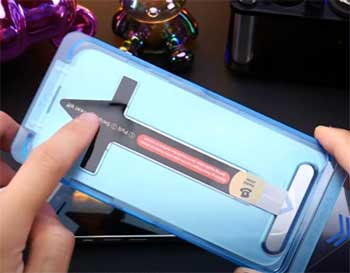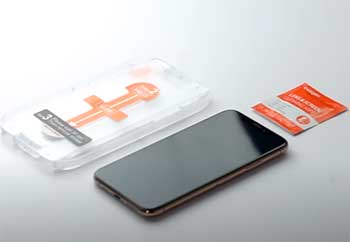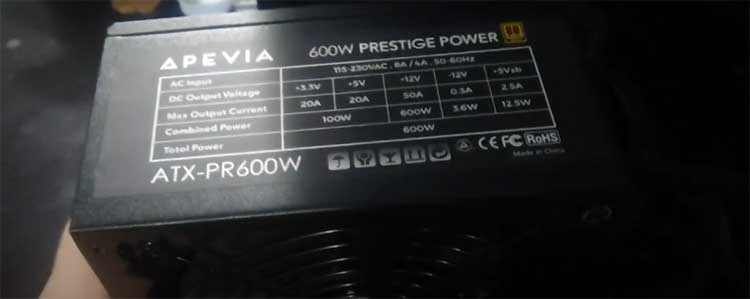If you’re looking for reliable screen protection for your smartphone, let me tell you right from the start—the ZAGG screen protector is worth considering.
I’ve personally tried and tested it, and while it’s not perfect, the pros definitely outweigh the cons, especially if you want to keep that sleek iPhone display intact.
Let’s go ahead and discuss why ZAGG protectors might be the best choice for you and your phone, plus how it stacks up against other brands in the market.
My Experience Using ZAGG Screen Protector
I’ve been using ZAGG screen protectors for several years, and they’ve saved my phone multiple times. The installation process was straightforward thanks to the plastic guide included in the package. After aligning it properly, I got a clean, bubble-free fit.

Over time, my ZAGG protector faced several drops—some from pretty significant heights—and it cracked a couple of times, but my phone’s screen remained untouched.
One of the drops happened when I was hiking, and the phone fell on rocky terrain.
The screen protector cracked, but I was relieved to see that my screen was perfectly fine. I reached out to ZAGG, and they replaced the protector quickly.
Yes, I had to pay a small shipping fee, but it was worth it considering the cost of a new screen or phone repair.
I’ve also appreciated the smooth surface of the ZAGG protector, which feels almost like the original iPhone screen, and it’s been effective in resisting smudges compared to other protectors I’ve used.
Overall, my experience with ZAGG has been positive, and it’s a product I trust to keep my phone protected.
Pros of ZAGG Screen Protectors

- Durability: One of the biggest pros of ZAGG screen protectors is their durability. I can say with confidence that my ZAGG screen protector took the hits so that my iPhone didn’t have to. It’s built with impact and scratch-resistant glass that’s two times stronger than most other tempered glass protectors out there. I’ve had mine on my iPhone 11, and through a couple of accidental drops and minor mishaps, it held up impressively.
- Smooth, Case-Friendly Fit: Another plus for ZAGG is the smooth, case-friendly fit. It’s meticulously designed to fit snugly on the iPhone, allowing it to work seamlessly with most cases. It doesn’t bubble or peel around the edges, which has been an issue with other screen protectors I’ve tried in the past. ZAGG’s design keeps it clean and perfectly aligned with the screen.
- Smudge Resistance: For someone who hates smudges (like me!), ZAGG’s oil-resistant coating is a blessing. It’s not entirely fingerprint-proof, but I’ve definitely noticed fewer smudges compared to using a regular screen protector. And the best part? The screen still feels as smooth as it did before I put the protector on. The touch sensitivity and clarity are just as good, if not better, than the screen itself.
- Lifetime Warranty: And then, there’s the limited lifetime warranty—ZAGG promises to replace the protector if it ever gets damaged. That’s one of the biggest reasons why I opted for ZAGG; it’s essentially a lifetime insurance plan for my screen protector. I had one experience where my phone fell hard on concrete, and ZAGG promptly sent me a replacement. Sure, there’s a shipping fee involved, but it’s still far cheaper than buying a whole new protector.
Cons of ZAGG Screen Protectors
- Incomplete Coverage: Of course, no product is without its flaws, and ZAGG is no exception. One of the common issues I’ve experienced, and also seen others mention, is that the screen protector doesn’t always cover the entire screen. This can leave a thin exposed strip along the edges, which is especially noticeable if you’re someone who likes edge-to-edge coverage. It’s designed this way to be case-friendly, but it can be a bit of a disappointment if you’re expecting full coverage.
- Price: Another downside is the cost. Let’s be real—ZAGG screen protectors are pricier compared to other options on the market. You can easily find cheaper screen protectors that claim to do the same job. However, in my opinion, ZAGG’s warranty and durability make up for the higher price tag. You’re investing in quality and peace of mind.
- Chipping Edges: I also found that the edges of the protector are prone to chipping, particularly if the phone is dropped or handled roughly. It’s not a deal-breaker for me, but it’s something worth noting. It’s much better to have the protector chip than the actual screen, but frequent replacement might be a bit of an inconvenience for some.
Comparison With Other Brands
- ZAGG Screen Protector Vs. MAGIC JOHN Screen Protector

When comparing ZAGG screen protectors to MAGIC JOHN screen protectors, the differences are quite noticeable.
MAGIC JOHN is a newer player in the market and is known for providing an ultra-thin design at an affordable price.
While MAGIC JOHN screen protectors may appeal to budget-conscious users, they do not provide the same level of impact resistance as ZAGG.
The MAGIC JOHN protector, in my experience, is great at scratch prevention but not as reliable when it comes to protecting the phone from drops.
The lack of a lifetime warranty also means that once the MAGIC JOHN protector gets damaged, you need to purchase a new one.
On the other hand, ZAGG excels in durability and impact protection, even though it comes at a higher cost. The added benefit of a lifetime warranty gives ZAGG a significant advantage for those who value long-term investment in their phone protection.
While MAGIC JOHN offers a lightweight, edge-to-edge coverage, it lacks the premium quality feel and resistance that ZAGG provides.
- ZAGG Screen Protector Vs. Spigen Screen Protector

Spigen is another popular brand when it comes to screen protectors, known for its affordability and quality.
Spigen screen protectors are well-designed, providing solid protection against scratches and minor impacts.
However, they lack the same level of advanced impact protection that ZAGG offers.
Spigen’s screen protectors are generally thinner, which means they may not provide the same robustness as ZAGG in case of significant drops.
One area where Spigen has an edge is price—their screen protectors are significantly cheaper than ZAGG, making them a good choice for those looking for basic protection without breaking the bank.
Spigen protectors also come with good alignment tools, but they do not provide the same level of case-friendliness and seamless fit that ZAGG does. Furthermore, Spigen does not offer a lifetime replacement warranty like ZAGG, which makes ZAGG the better option for those who want ongoing protection without having to spend more in the long run.
Maintenance Tips for ZAGG Screen Protectors
- Proper Installation: To make the most out of your ZAGG screen protector, a little maintenance goes a long way. First off, you need to ensure it’s applied properly. I recommend following the installation instructions to the letter or even watching a video tutorial. ZAGG’s patented EZ Apply tabs are really helpful, but if you rush, you might end up with an annoying air bubble or misalignment.
- Cleaning: Once the protector is on, keeping it clean is key. I usually use a microfiber cloth to gently wipe the screen every few days. This helps to remove any smudges or dirt that may accumulate. Avoid using any harsh cleaning chemicals, as they can damage the oleophobic coating over time.
- Warranty Use: Another tip—don’t be afraid to use that lifetime warranty! If the protector gets cracked, chipped, or scratched, request a replacement. There’s no point in using a broken screen protector when ZAGG offers such an easy replacement process.
Does ZAGG Live Up To the Hype?
From my experience, ZAGG screen protectors live up to most of the promises they make. I had my iPhone 11 dropped more times than I care to admit, and the ZAGG screen protector took the brunt of the impact every single time.
Sure, it cracked once, but my actual screen remained pristine—and for me, that’s the ultimate test of a screen protector’s quality.
It’s not perfect—it’s pricier than others, and the shipping fee for warranty replacements is a minor annoyance. But considering how much it’s saved me in terms of screen repair costs, I’d say it’s worth every penny.
The overall ease of installation, quality feel, and responsive warranty support make ZAGG one of my top recommendations for anyone looking to protect their phone.
Frequently Asked Questions (FAQ)
Yes, it absolutely works. ZAGG screen protectors are designed to provide a significant level of protection against scratches and impacts. In my experience, they’ve prevented my screen from shattering multiple times. They’re also durable and come with an easy replacement warranty in case the protector itself gets damaged.
The best screen protector largely depends on your needs. For premium protection with a warranty, ZAGG is among the top choices. If you’re looking for something more budget-friendly, Tech Armor or Spigen are also solid options. ZAGG, however, stands out for its impact resistance and lifetime warranty.
If your screen breaks while using a ZAGG protector, the company does not cover screen repair—the warranty applies only to the screen protector itself. That said, the purpose of a screen protector is to prevent such breaks, and in my case, it has worked well so far.
ZAGG is more expensive because of its high-quality tempered glass, impact resistance technology, and the lifetime warranty they offer. You’re not just paying for the protector—you’re paying for peace of mind, knowing you won’t have to worry about replacing it (or your screen) for as long as you own your device.
Wrapping Up
In the end, buying a ZAGG screen protector might just be one of the smartest investments you can make for your smartphone. It’s about protecting what matters and getting peace of mind while doing so.
While it has its minor flaws, the overall protection and warranty make it an easy recommendation from my side. If you value your phone and want to keep it looking as good as new, ZAGG is worth the investment.
